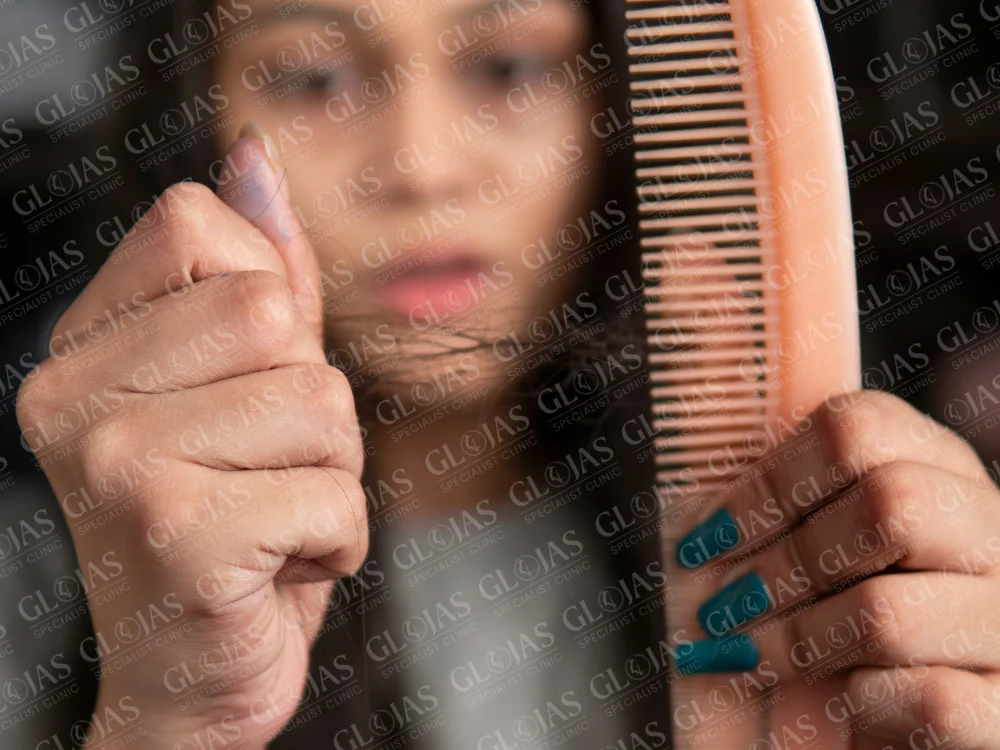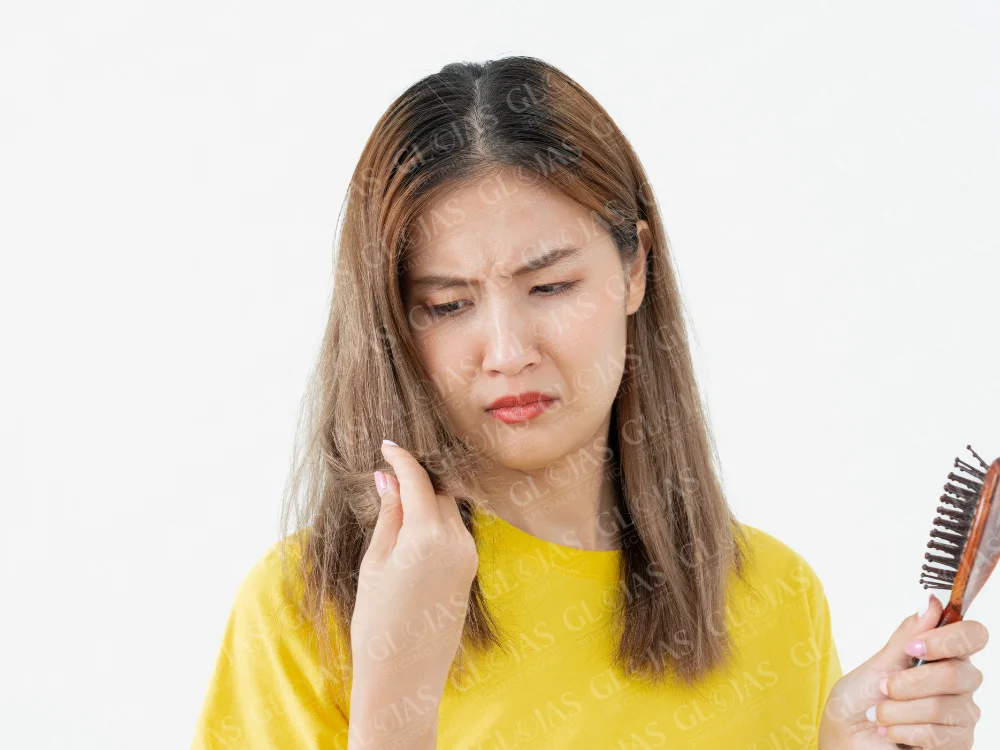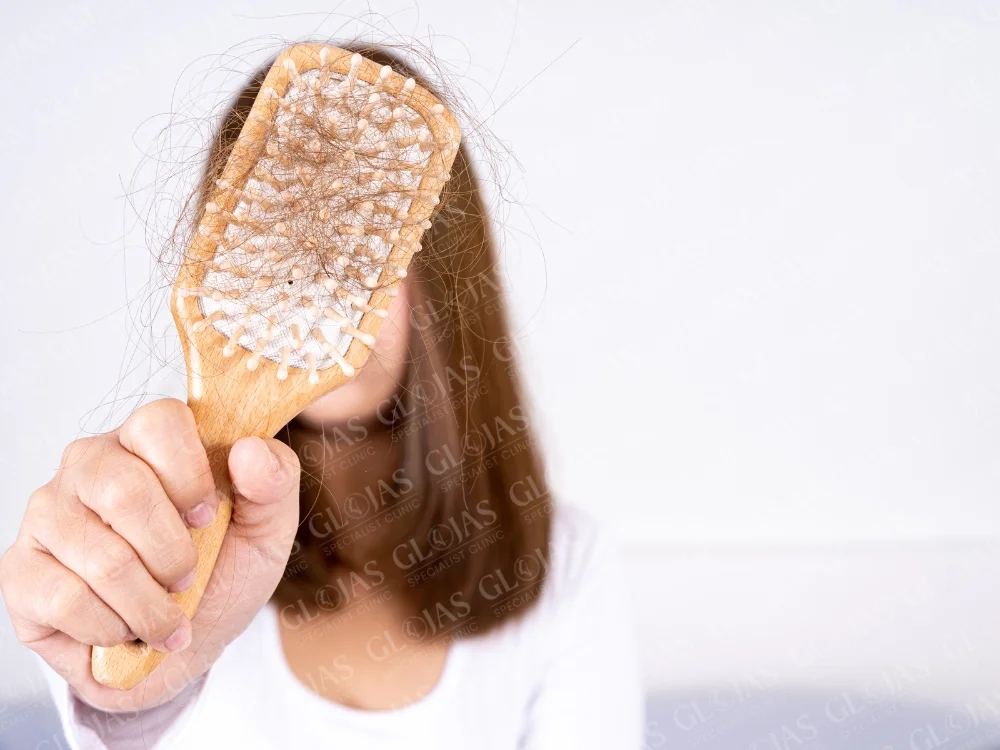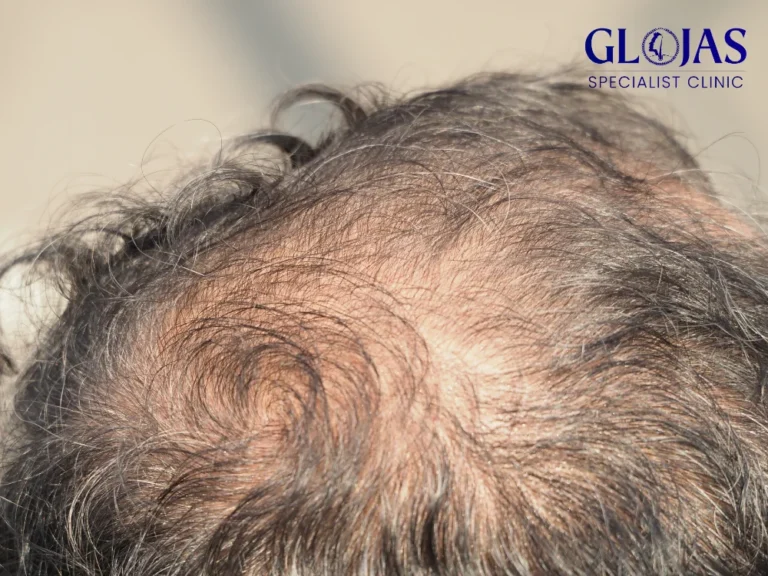Hairfall in men is a common issue that affects millions worldwide, causing distress and impacting self-confidence. Although it’s normal to lose between 50-100 hairs per day, excessive hairfall can lead to noticeable thinning, bald patches, and even permanent hair loss. Understanding the causes and exploring effective treatments is crucial for addressing this problem early.
In this article, we’ll explore the most common causes of hairfall in men and share scientifically-backed solutions that can help reduce hair loss, promote regrowth, and boost your confidence.
What Causes Hairfall in Men?
Hairfall in men can occur due to various factors. While genetics play a significant role, lifestyle choices, environmental influences, and underlying medical conditions can also contribute to excessive hair loss. Below are the most common causes:
1. Genetics and Male Pattern Baldness
The most prevalent cause of hairfall in men is male pattern baldness, scientifically known as androgenetic alopecia. This condition is hereditary and often results in a receding hairline or thinning at the crown. Over time, hair becomes finer and shorter until it may stop growing altogether.
2. Hormonal Imbalances
Hormonal imbalances, particularly involving dihydrotestosterone (DHT), a derivative of testosterone, can contribute to hair loss in men. DHT binds to hair follicles and weakens them, leading to thinning hair and, eventually, baldness.
3. Stress and Emotional Strain
High levels of stress can trigger temporary hairfall, a condition known as telogen effluvium. Stress affects the hair growth cycle, pushing more hairs into the resting phase, causing them to fall out prematurely.
4. Poor Nutrition
A lack of essential vitamins and minerals, particularly iron, zinc, and vitamins A, D, and E, can weaken hair strands and follicles, resulting in increased hairfall in men. Protein deficiency also hinders hair growth, as hair is primarily made of keratin, a protein.
5. Medical Conditions and Medications
Certain medical conditions, like thyroid disorders, autoimmune diseases, and scalp infections, can cause hairfall. Medications for conditions like high blood pressure, depression, and heart disease may also lead to hair loss as a side effect.
6. Hairstyling and Chemical Treatments
Frequent use of harsh styling products, tight hairstyles like ponytails, and chemical treatments like bleaching and coloring can damage hair and lead to breakage and thinning over time.

Signs of Hairfall in Men to Watch Out For
Hairfall in men can manifest in different ways, and early detection is key to treating it effectively. Here are some common signs to watch out for:
1. Receding Hairline
A receding hairline, particularly around the temples and forehead, is often the first noticeable sign of male pattern baldness. The hairline gradually moves backward, forming an “M” shape over time.
2. Thinning at the Crown
Thinning or bald spots at the top of the head or crown are common indicators of hair loss. This area may progressively widen if left untreated.
3. Widening Part Line
If you notice your part line becoming wider than usual, it could be a sign of thinning hair, especially at the top of your head.
4. Excessive Shedding
Finding large clumps of hair in your comb, pillow, or shower drain can be an indication of abnormal hairfall. While shedding hair is normal, excessive amounts can suggest an underlying issue.

Top Treatments for Hairfall in Men
Fortunately, there are various treatment options available to combat hairfall in men, ranging from natural remedies to medical interventions. Here’s a breakdown of some of the most effective solutions:
1. Minoxidil
Minoxidil is an FDA-approved topical treatment for male pattern baldness. Available over the counter, it stimulates hair follicles to promote growth and slow down hair loss. Applied directly to the scalp, it’s most effective when used at the early stages of hairfall.
2. Finasteride
Finasteride is an oral prescription medication that inhibits the production of DHT, the hormone responsible for male pattern baldness. It helps to prevent further hair loss and, in some cases, encourages regrowth in men suffering from thinning hair.
3. Hair Transplant Surgery
For men with advanced hair loss, hair transplant surgery is a permanent solution. It involves taking hair follicles from areas with healthy growth (usually the back of the scalp) and transplanting them to bald or thinning areas.
4. PRP Therapy (Platelet-Rich Plasma)
PRP therapy is a non-surgical treatment that involves injecting platelet-rich plasma from the patient’s blood into the scalp. The growth factors in PRP stimulate hair follicles, encouraging hair regrowth.
5. Laser Therapy
Low-level laser therapy (LLLT) is a non-invasive treatment that uses red light to stimulate hair growth by increasing blood circulation to hair follicles. It’s an effective option for men with mild to moderate hair loss.
6. Nutritional Supplements
Taking supplements that contain essential vitamins and minerals, such as biotin, zinc, and omega-3 fatty acids, can support hair health and prevent further loss. Collagen supplements can also help strengthen hair strands and promote regrowth.
7. Lifestyle Changes
Managing stress, improving your diet, and avoiding damaging hair practices can significantly reduce hairfall in men. Incorporating more protein, leafy greens, and fruits into your meals ensures your hair follicles get the nutrients they need.
How to Prevent Hairfall in Men
While hairfall can’t always be entirely prevented, especially if it’s due to genetics, there are several proactive steps men can take to minimize the risk and slow down the process:
1. Follow a Healthy Diet
Ensure your diet is rich in protein, iron, and vitamins that support hair health. Foods like eggs, nuts, leafy greens, and fish can provide the nutrients necessary for strong, healthy hair.
2. Manage Stress
Find ways to manage stress through activities like yoga, meditation, or regular exercise. Reducing stress can help regulate your hair’s growth cycle and prevent excessive shedding.
3. Be Gentle with Your Hair
Avoid using tight hairstyles or excessive heat and chemicals on your hair. Opt for mild shampoos and conditioners that don’t strip your scalp of its natural oils.
4. Regular Scalp Massages
Massaging your scalp for a few minutes each day increases blood circulation to the hair follicles, promoting healthy growth. Use natural oils like coconut or rosemary oil to nourish your scalp further.
5. Avoid Smoking and Excessive Alcohol
Smoking and excessive alcohol consumption can lead to poor circulation and nutrient deficiencies, both of which can accelerate hair loss.

Frequently Asked Questions (FAQs) About Hairfall in Men
1. Is hairfall in men reversible?
In some cases, hairfall is reversible, especially if it’s caused by factors like stress or nutritional deficiencies. However, hair loss due to male pattern baldness is usually permanent, though treatments can slow its progression.
2. How long does it take to see results from hairfall treatments?
Results vary depending on the treatment. Minoxidil and finasteride typically take 3-6 months to show noticeable improvement, while hair transplants and PRP therapy can take longer to achieve full results.
3. Can hair loss in men be prevented?
While male pattern baldness cannot be entirely prevented, adopting a healthy lifestyle, reducing stress, and seeking early treatment can help slow down the process and minimize hair loss.
4. Is hair transplant surgery safe?
Hair transplant surgery is generally safe when performed by a qualified and experienced surgeon. As with any surgery, there are risks, but complications are rare.
5. Does wearing hats cause hair loss?
No, wearing hats does not cause hair loss. However, excessively tight hats may cause traction alopecia, which can lead to hairfall if worn frequently.
6. Can stress alone cause hairfall in men?
Yes, stress can trigger temporary hair loss, particularly in the form of telogen effluvium. Reducing stress levels can help your hair return to its normal growth cycle.
